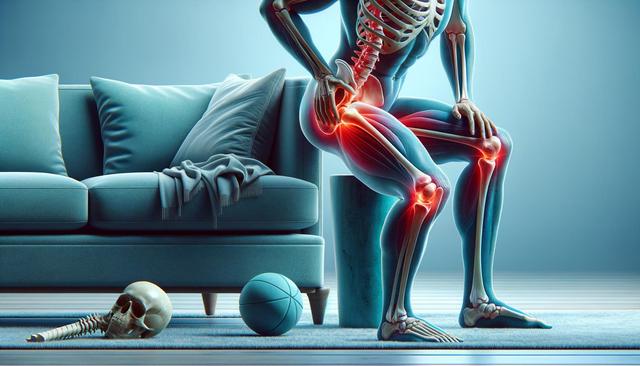Understanding the Root Causes of Hip Pain
Hip pain can stem from a variety of causes, ranging from acute injuries to chronic conditions like arthritis or bursitis. Identifying the underlying issue is the first step in finding the most appropriate solution. Common triggers include overuse injuries, inflammation, poor posture, and degenerative diseases. Each source may require a different relief strategy, making it essential to consult a healthcare professional for a proper diagnosis. Once the cause is known, it becomes easier to explore targeted solutions that offer relief without invasive procedures.
Non-surgical hip pain treatments are often recommended as a first-line approach. These include physical therapy, lifestyle modifications, and supportive devices. For those dealing with inflammation-based pain, reducing joint stress and improving mobility can make a significant difference. In many cases, combining multiple methods yields better outcomes than relying on a single treatment alone.
Exploring Natural Remedies For Hip Pain
Many individuals prefer to start with natural remedies for hip pain, especially when looking for sustainable, low-risk solutions. These options can be particularly appealing for those who want to avoid the potential side effects associated with long-term medication use. Natural approaches aim to reduce inflammation, improve circulation, and promote healing through gentler means.
Some widely used natural remedies include:
- Hot and cold compresses to reduce swelling and stiffness
- Gentle stretching and yoga for improved flexibility
- Herbal supplements known for their anti-inflammatory properties
- Massage therapy to improve blood flow and reduce tension
Additionally, using CBD oil for hip arthritis pain has become increasingly popular as a plant-based alternative that may help manage discomfort. While research is still evolving, many users report reduced inflammation and improved mobility. Integrating these remedies into a consistent self-care routine can lead to cumulative benefits over time.
The Role of Chiropractic Care For Hip Pain
Chiropractic care for hip pain offers a non-invasive avenue that focuses on spinal alignment and overall joint function. Misalignment in the spine or pelvis can contribute to hip discomfort, and chiropractors use manual adjustments to restore proper positioning. This method can alleviate pressure on nerves and tissues, potentially reducing pain and improving movement.
Chiropractic treatments often include:
- Spinal adjustments to correct misalignments
- Joint mobilization techniques
- Posture assessments and ergonomic advice
- Targeted exercises to support recovery
Patients who commit to regular chiropractic sessions frequently report noticeable improvements in their pain levels and overall mobility. While this approach may not be suitable for everyone, it is well-regarded among those seeking non-surgical hip pain treatments that focus on long-term joint health.
Comfort Solutions: Supportive Tools and Devices
Incorporating supportive tools into daily life can provide immediate relief and help manage hip pain more effectively. One practical option includes using cushions specifically designed to alleviate pressure on the hips. The best cushions for hip pain relief are typically memory foam-based and contoured to promote proper posture and alignment, making them ideal for long periods of sitting.
Other helpful tools include:
- Ergonomic chairs that support the lower back and hips
- Footrests to reduce pressure on the hips while seated
- Orthotic shoe inserts to correct gait imbalances
- Adjustable beds or recliners for elevated leg positioning
Another increasingly popular device is the TENS unit for hip pain, which uses electrical impulses to stimulate nerves and relieve discomfort. This portable solution is especially useful for those seeking drug-free pain management methods that can be used at home or on the go.
Integrating Lifestyle Changes for Long-Term Relief
Long-term relief from hip pain often hinges on making consistent lifestyle changes. While treatments and tools can offer significant support, maintaining healthy habits is key to preventing recurring issues. Weight management plays a vital role, as excess weight can place added stress on the hip joints. Regular low-impact exercise, such as swimming or cycling, can help strengthen surrounding muscles without exacerbating pain.
Consider incorporating the following habits into your routine:
- Staying active with joint-friendly exercises
- Maintaining a balanced diet rich in anti-inflammatory foods
- Practicing good posture during daily activities
- Taking breaks to stretch and move throughout the day
These changes may not produce immediate results, but over time, they contribute to improved joint function and reduced discomfort. When combined with other methods, such as CBD oil for hip arthritis pain or chiropractic care for hip pain, lifestyle adjustments can provide a holistic framework for managing chronic hip issues.
Conclusion: Building a Personalized Plan for Hip Pain Relief
Managing hip pain effectively requires a well-rounded approach that addresses both immediate discomfort and long-term joint health. From exploring natural remedies for hip pain to integrating non-surgical hip pain treatments like chiropractic care and lifestyle changes, there are numerous strategies available. Supportive tools such as the best cushions for hip pain relief and TENS units can further enhance comfort and mobility.
Everyone’s experience with hip pain is different, so it’s important to create a personalized plan that aligns with your individual needs and goals. Whether you’re just beginning your journey or looking to refine your current routine, combining multiple methods can lead to more consistent and lasting relief.




Leave a Reply